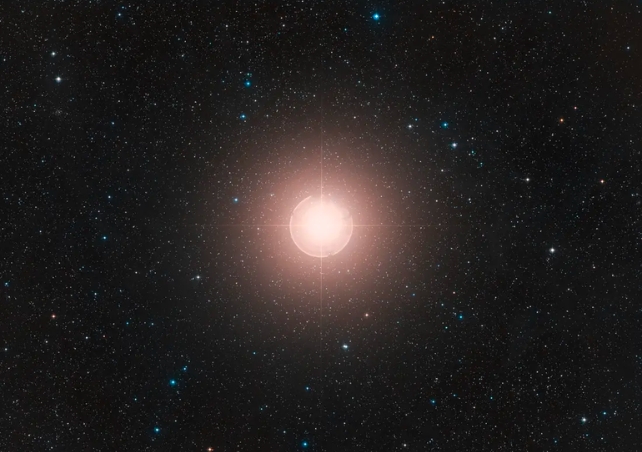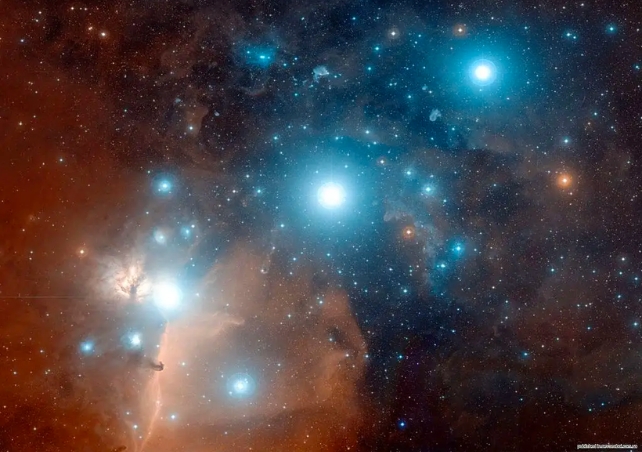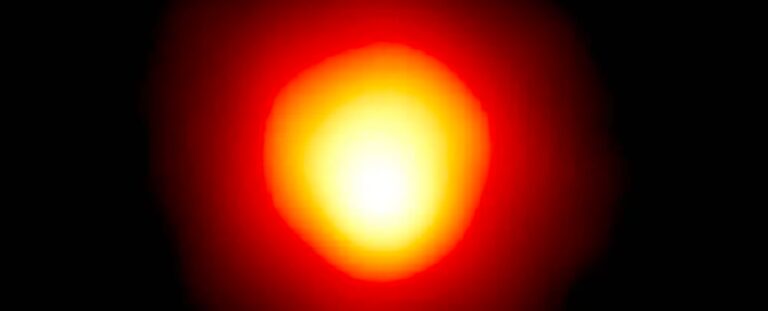Betelgeuse on the Verge of Vanishing – Here’s a Guide to Witnessing the Event.
Betelgeuse, a prominent star in our celestial sphere, has exhibited peculiar behavior in recent years. Situated in the Orion constellation, this red supergiant experienced a sudden dimming in 2019, leading astronomers to speculate on the possibility of an imminent explosion.
Presently, scientists are forecasting that Betelgeuse will momentarily vanish from our view on December 12, albeit for a brief period. This occurrence will be attributed to the passing asteroid named 319 Leona, which will obstruct Betelgeuse’s visibility from Earth for approximately five seconds, similar to a solar eclipse caused by the moon.
This event presents a unique opportunity for astronomers to gather vital data about Betelgeuse, pronounced like the character Beetlejuice from Tim Burton’s film. The information collected during this occurrence could significantly contribute to our understanding of the formation of planetary systems.
Astrophysicist Miguel Montargès from the Paris Observatory expressed the exceptional nature of this event, stating, “This is an incredibly rare opportunity that may only come once in a lifetime.”

Asteroids frequently pass in front of stars, but their size often results in the complete obscuration of the star’s light. However, in the case of 319 Leona, it possesses the ideal dimensions to create a captivating “ring of fire” eclipse visible from Earth.
Consequently, while the asteroid will obstruct the brightest illumination from Betelgeuse, it will allow a portion of its radiance to filter through. This will enable Earth-based observatories to perceive some of the star’s fainter characteristics.
This fortuitous occurrence is particularly advantageous for researchers studying stellar physics. Currently, no terrestrial observatory possesses the capability to gather this valuable information without the assistance of the asteroid, as stated by Montargès.
The anticipation is that this occultation event could offer insights into the movement of hot, charged gas within the dying star, a phenomenon known as the star’s convective cells, according to Montargès.
This knowledge is of great significance as it can provide us with a deeper understanding of the birth of planetary systems similar to our own, Montargès added.

“It will provide us with an understanding of the physics behind red supergiants and the mechanisms by which they release their stellar wind,” he mentioned, emphasizing that the star’s material could potentially give rise to a new solar system.
Montargès and his team are leading a group of approximately 80 amateur astronomers across Europe who will direct their telescopes towards the sky during the night to gather extensive data throughout the event.
“If we execute our tasks effectively during this campaign, and if the weather conditions are favorable, we may be able to capture an image of the star’s surface in the visible spectrum,” Montargès stated.
“From this image, we can infer the properties of convection and determine its role in propelling the star’s wind,” he explained.
To participate, individuals must be located within an extremely narrow path, approximately 60 kilometers (37 miles) wide, which stretches from southern Europe to Turkey, Greece, southern Italy, southern Spain, and Portugal, before crossing the Atlantic and briefly touching the southern tip of Florida.
You can verify whether your location offers a suitable vantage point for observing the event by visiting the International Occultation Timing Association’s (IOTA) website.
To observe Betelgeuse with the naked eye, locate the three stars that form Orion’s Belt. Adjacent to these stars, towards the left, you will find a reddish star, which is Betelgeuse.
Observers should not anticipate witnessing the ring of fire directly, as it would necessitate a highly powerful telescope to discern such intricate details of the distant star. However, they can actively contribute to the scientific discovery by recording the star’s dimming through their telescopes.
In order to ensure scientific usefulness, it is recommended for astronomers to incorporate a filter, such as red, green, or blue, into their observatory setup. Additionally, it is important to capture the event using a camera with an exposure time of no more than 50 milliseconds.
To enhance the accuracy of their recordings, astronomers should meticulously note down their precise latitude and longitude. It is highly advisable to synchronize the recordings to the millisecond by utilizing a GPS-controlled time inserter or dedicated applications.
IOTA encourages astronomers to share their observations with local groups that are actively monitoring the event. These groups can be easily located on the IOTA website.
For those unable to physically be present in the designated areas, they can still participate in the excitement. The Virtual Telescope Project will be live-streaming the event online starting from 8 p.m. ET on December 11.
This article is republished from sciencealert under a Creative Commons license. Read the original article.
Do not forget to share your opinion with us to provide you with the best posts !




0 Comments